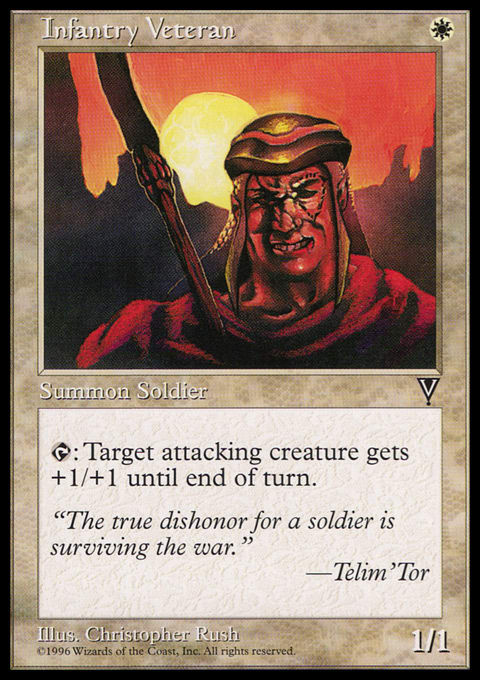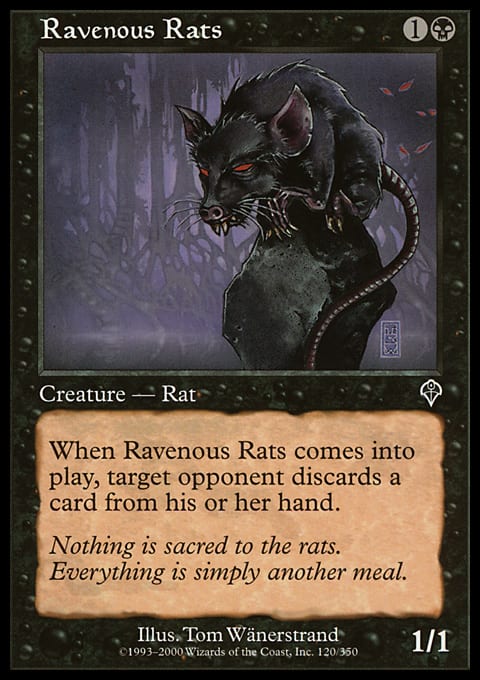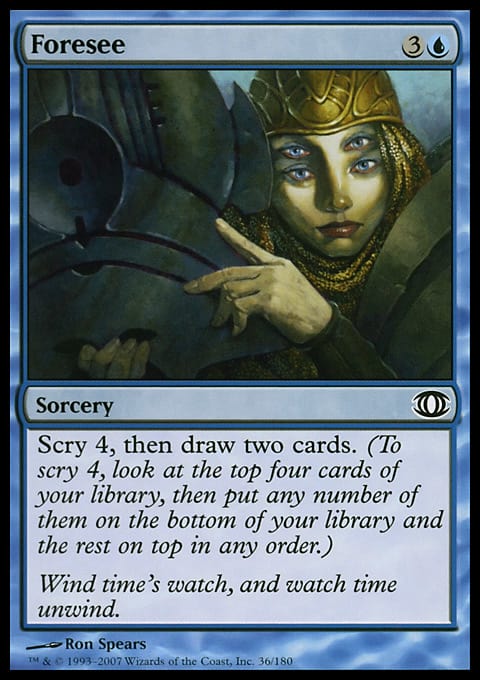Constructing a Cube is the best parts of Limited and Constructed Magic. Instead of crafting the perfect sixty (or ninety-nine plus one), Cube design is about creating the best possible environment. Then comes the fun stuff—y'know, the actual Draft. Drafting is neural gymnastics, and just like any routine, it requires a warm-up and some stretching. As I discussed last week, the best way a Cube designer can make this process seamless (short of writing an in-depth format analysis of the Cube and sending out the mammoth document beforehand) is to make use of the history of Magic and the identities of the guild pairs to provide a touchstone. This is certainly the case in Pauper Cubes, where the cards are the simplest executions of their colors. While I am sure that there are some awesome Planar Chaos Cubes out there, toying with the color pie, doing so with the limited scope of commons would provide a challenge (perhaps best suited for a later day).
As we continue to exploration of archetypes in my Cube, we have arrived at Boros and Dimir. These guilds play very differently from each other and require completely different mindsets.
Boros is the color of the relentless army. Combining white's military prowess with red's passion, Boros decks tend to be the most all-out aggressive. The guiding principle for this strategy comes from Gatecrash in the form of battalion; Boros does not overwhelm you with a giant monster, but rather comes at an opponent in wave after wave of assault. This deck tends to be highly regimented (not unlike the Boros Legion itself) and necessitates some key components.
Combat-oriented 1-drops – Boros likes beginning the beatdown as early as possible. This color combination lacks any traditional forms of card advantage, and as such, it needs to end the game before cards like Mulldrifter can come online. Being able to start on turn one is one advantage the Boros mage needs. Cards like Mogg Fanatic, Infantry Veteran, and Doomed Traveler do fine jobs of starting the assault while having utility later. Akrasan Squire is a fine 1-drop that can connect for 2 on turn two and has the bonus of making later attacks more potent. The Squire's exalted ability matters less as the game goes on, so while it is still a fine pick, it is not as important as something like Infantry Veteran that does its job even in gang attacks. Gideon's Lawkeeper and Goldmeadow Harrier provide additional utility from the 1 spot while also being able to sneak in a few points of damage for good measure.
Powerful 2-drops – Having the best 1-drops is all well and good, but Boros needs to continue to apply pressure as the game goes on. Benalish Calvary, Daring Skyjek, and Mogg Flunkies all serve as highly aggressive 2-drops that can put a hurt on opponents. Syndic of Tithes also falls into this category, as it can provide a ton of extra damage due to the cheap nature of Boros spells. Plated Geopede and Keldon Marauders are pure Lava Spikes—they exist to deal damage and are good at their job. Goblin Shortcutter is a nice way to remove a pesky blocker for a turn. Boros also has two strong gold cards that fill this role in Cerodon Yearling and Goblin Legionnaire. Thankfully, these cards can (and do) go late due to their color requirements, meaning a Boros drafter can spend early picks on the best 2-drops and burn spells available. Oh, what was that?
Burn spells – Also known as reach, these are the cards that end the game. As mentioned previously, Boros has some of the worst card advantage. This being the case, the deck needs to subscribe to the Philosophy of Fire. Lightning Bolt is obviously a premium here, but so are cards like Incinerate, Searing Spear, and Lightning Strike. Searing Blaze is a premium spell since it can go to the dome as well as remove a blocker. Arc Lightning and Pyrotechnics are also high picks since they are some of the only ways for Boros to access two- (or three-) for-ones. Fireblast is not what one would want to use to remove a creature, but sometimes there are desperate times. Rather, Fireblast is best used as one of the Boros deck’s . . .
Finishers – Fireblast does a great job of stealing games. Blinding Beam plays a similar role here as it did in Azorius: clearing the way for a final attack. Dynacharge can make an attack lethal out of nowhere. These cards are less important than burn spells since as they are narrower in scope. These cards can be picked up later (aside from Fireblast) with little detriment toward the goal of victory.
This version of Boros want is the beatdown. Its goal is to end the game as quickly as possible. An ideal version of this deck looks something like this:
"Boros Aggro"
- Creatures (18)
- 1 Azorius Arrester
- 1 Benalish Cavalry
- 1 Daring Skyjek
- 1 Fervent Cathar
- 1 Gideon's Lawkeeper
- 1 Gore-House Chainwalker
- 1 Infantry Veteran
- 1 Master of Diversion
- 1 Mogg Fanatic
- 1 Mogg Flunkies
- 1 Plated Geopede
- 1 Skinbrand Goblin
- 1 Skirk Marauder
- 1 Stormfront Pegasus
- 1 Syndic of Tithes
- 1 Viashino Firstblade
- 1 Vulshok Replica
- 1 Wojek Halberdiers
- Spells (6)
- 1 Fireblast
- 1 Lightning Bolt
- 1 Lightning Strike
- 1 Searing Blaze
- 1 Arc Lightning
- 1 Bonesplitter
There is another path for the Boros to walk. While the core concept is similar, this deck focuses on generating tokens and ending the game with a very wide army. In this version, a card like Dynacharge or Goblin Bushwhacker goes up in value—these cards’ effects are not easy to replicate. Dragon Fodder, Krenko's Command, Gather the Townsfolk, and Raise the Alarm are all cards to pick up. Mogg War Marshal is the poster child for a deck like this, providing a powerful “army in a can.” Kruin Striker is another card that shines in this build due to its high upper limit for damage potential.
"Boros Tokens"
- Creatures (13)
- 1 Attended Knight
- 1 Doomed Traveler
- 1 Goblin Arsonist
- 1 Goblin Bushwhacker
- 1 Kabuto Moth
- 1 Keldon Marauders
- 1 Kor Skyfisher
- 1 Kruin Striker
- 1 Mogg War Marshal
- 1 Nyxborn Rollicker
- 1 Sensor Splicer
- 1 Myr Sire
- 1 Karplusan Wolverine
- Spells (10)
- 1 Burst Lightning
- 1 Dynacharge
- 1 Lightning Bolt
- 1 Martial Glory
- 1 Raise the Alarm
- 1 Searing Spear
- 1 Arc Lightning
- 1 Dragon Fodder
- 1 Flayer Husk
- 1 Leonin Bola
- Lands (17)
- 8 Mountain
- 8 Plains
- 1 Boros Garrison
Boros tokens is an interesting route. It rewards putting a higher value on slightly different cards while taking the Boros battalion mentality to a slightly illogical end.
Moving through the guilds alphabetically brings us to the guild that does not technically exist. House Dimir is a sneaky one, and they managed to work their way into my brain and make some subtle changes to their brand of deceit. In my first article of this site, I talked about Dimir being primarily acting as a value-based control deck with a graveyard-based Flicker subtheme. While this is not exactly false, the cards are not quite there for either of these aspects to be considered fully a theme of the color. Rather, the main goal of these two colors resides in their history of being very good at controlling the game. While grind might not have been the named mechanic from Dimir in Gatecrash, it certainly describes the guild’s preferred victory style.
A good defense – Dimir decks tend to be slower than average and, as such, they need ways to gum up the ground early. Aquamoeba, Omenspeaker, and Seacoast Drake all fit the bill. Alchemist's Apprentice, Myr Sire, and Perilous Myr also are smart pick-ups since they deter attacking quite a bit. Black also provides some strong defensive options in Typhoid Rats, Baleful Eidolon, and a leashed version of Grim Roustabout. The goal is to stay alive, and these creatures help with that.
Persistent card advantage – When looking at the backbone of the Dimir army, one needs to look no further than rats. Chittering Rats, Liliana's Specter, and Phyrexian Rager all typify a solid creature with a strong enters-the-battlefield ability that Dimir desires. These cards are fine on their own but truly shine when combined with Ninja of the Deep Hours, Okiba-Gang Shinobi, and Cavern Harpy. And we can’t forget Mulldrifter, the spokesfish for this class of cardboard. The ability to advance your own board state while hindering an opponent’s development plays right into what Dimir wants to do.
Dimir also does not mind spending slots on card-draw. Consult the Necrosages is a versatile option that can also hinder an opponent in a pinch. Compulsive Research, Sift, Foresee, and Read the Bones are all viable choices, and drafting two of these can put the caster far ahead in any attrition battle.
Just say “no” – Dimir decks make some of the best use of the countermagic available in the Cube. Soul Manipulation is among the better cards available since it stops a creature while also acting as a semi-tutor (provided the creature you want has already died). Soul Manipulation can be grabber later than other spells, but stoppers like Counterspell and Exclude need to be drafted earlier.
Point and click – While the creatures in Dimir tend to be on the smaller end of the size scale, the guild’s removal options are rather fantastic. Removal of all sorts should be drafted fairly early in order to ensure those tiny rats can find their way to victory. Crippling Fatigue is nice here since it comes with built-in card advantage. Recoil and Agony Warp can go earlier than other gold cards (due to raw power), so if you’re looking to draft Dimir, these are reasonable to pick up above monochromatic options.
House Dimir plays the slow game, and, while not the most glacial deck in the Cube, it can get off to some sluggish starts. Once the card-advantage ball gets rolling, however, it is hard to stop the blue and black boulder.
"Dimir Control"
- Creatures (13)
- 1 Archaeomancer
- 1 Baleful Eidolon
- 1 Cavern Harpy
- 1 Chittering Rats
- 1 Echo Tracer
- 1 Gravedigger
- 1 Mulldrifter
- 1 Ninja of the Deep Hours
- 1 Omenspeaker
- 1 Seacoast Drake
- 1 Shaper Parasite
- 1 Twisted Abomination
- 1 Spire Golem
- Spells (10)
- 1 Agony Warp
- 1 Counterspell
- 1 Death Wind
- 1 Essence Scatter
- 1 Soul Manipulation
- 1 Voyage's End
- 1 Consult the Necrosages
- 1 Crippling Fatigue
- 1 Foresee
- 1 Dead Weight
- Lands (17)
- 7 Swamp
- 8 Island
- 1 Dimir Aqueduct
- 1 Dimir Guildgate
There is another way House Dimir takes out its opponents. Described by Brian David-Marshall as “almost everything he wants to do in Draft,” it is a more aggressive version of the Dimir deck. Rather than slowly grinding out an adversary, this version applies pressure early and looks to slam the door with raw card advantage. The biggest changes between this deck and the slower Dimir version are the following:
Aggressive 2- and 3-drops – Cards like Fallen Askari go up in value, as Dimir aggro plays a more tempo-oriented game. Chittering Rats and its ilk are still of use, but cards like Man-o'-War also go up in value due to their ability to clear a path.
Bounce is more important – This deck plays the tempo game. The combination of advancing your own board position while hindering an opponent’s is compounded in a deck that can widen the gap with card advantage.
Two-way players – Creatures that transition from offense to defense and back are golden. Aquamoeba is one such example, but Kathari Screecher (which can block and come back for more damage) or Stitched Drake shine in the more beatdown-minded Dimir stack.
"Dimir Tempo"
- Creatures (13)
- 1 Aquamoeba
- 1 Cadaver Imp
- 1 Fallen Askari
- 1 Man-o'-War
- 1 Ninja of the Deep Hours
- 1 Okiba-Gang Shinobi
- 1 Phyrexian Rager
- 1 Ravenous Rats
- 1 Skinthinner
- 1 Stitched Drake
- 1 Vampire Interloper
- 1 Waterfront Bouncer
- 1 Wingcrafter
- Spells (10)
- 1 Essence Scatter
- 1 Exclude
- 1 Recoil
- 1 Repulse
- 1 Compulsive Research
- 1 Consult the Necrosages
- 1 Morbid Plunder
- 1 Preordain
- 1 Probe
- 1 Undo
- Lands (17)
- 8 Island
- 8 Swamp
- 1 Dimir Aqueduct
Boros and Dimir go about their business in rather different fashions. Those who wear red and white throw caution to the wind and seek to attack all-out, closing the game with powerful burn spells. The blue and black brethren are brutal in their own way, nickel-and-diming their way to victory before sealing the deal with a fist full of cards (or ripping away that same fistful). Unlike some other actors in the realm of Cube, Dimir does not adhere to its guild model as well as an archetype like Boros.
How do you handle underperforming guilds in your Cube? Do you lean heavier on history (as Dimir tempo does) or do you find a new way to provide a nice shine? As for me, well, I go with what works and what people want to draft.
Keep slingin’ commons—
-Alex
SpikeBoyM on Magic Online
Check out Common Cause on iTunes!
Discuss Pauper on Twitter using #mtgpauper




























